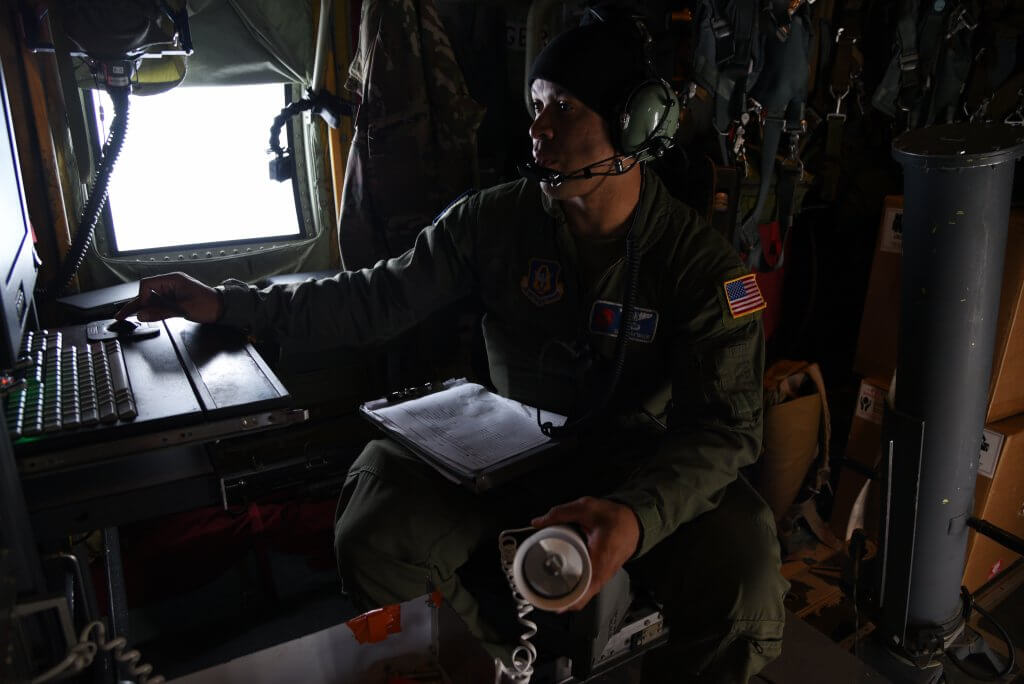Events leading to Aug. 29, 2021, were imperative as Hurricane Ida strengthened to a Category 4 storm and barreled toward Southeast Louisiana. While 150 mph winds threatened citizens’ livelihoods, airmen from the 403rd Wing’s 53rd Weather Reconnaissance Squadron were on continuous, around-the-clock missions inside the storm’s eye to collect atmospheric information.
“We’re here to provide weather reconnaissance data to the relevant government agencies,” said Lt. Col. Mark Withee, a navigator with the 53rd Weather Reconnaissance Squadron. “This is one of the few things the military does on a regular basis that provides a direct, tangible benefit for the American public.”
The data influences National Weather Service forecasts, weather warnings and evacuation orders. And the squadron is unique in that it’s the only one within the Department of Defense with this specific mission.
Stationed at Keesler Air Force Base in Biloxi, Mississippi, military leaders there depend on the Hurricane Hunters to ultimately decide what to do about expensive military aircraft and equipment in a severe storm path.
Hurricane Hunters always on call
During Hurricane Ida, the team evacuated its aircraft from the Gulf Coast to fly missions out of the Kelly Field flight line at Joint Base San Antonio-Lackland in Texas.
The squadron was again called into action in late September when Hurricane Sam quickly developed over the Atlantic Ocean. While a reserve unit with traditional reserve airmen, the hunters maintain full-time crews who are always on and ready to go, during the Atlantic hurricane season.
Within 16 hours of receiving the call from the National Hurricane Center, three crews and three aircraft from the 53rd were deployed to a forward operating base in St. Croix, U.S. Virgin Islands. Over the span of five days, the airmen oversaw 10 flights into Hurricane Sam. The team flew its last mission into the storm on Oct. 2, 2021, after the Category 4 hurricane was downgraded and its location no longer threatened to make landfall.
On missions into the eye, navigators like Withee operate as radar experts at stations inside the C-130 cockpit, ensuring pilots make it through points of low visibility. The crew endures the worst turbulence as they break through to the eye or the “calm center” of the storm and where wind speeds drop from 120 mph to zero.
“In a really picturesque storm, there’ll be clear, blue sky above you, and a lot of times you can see the full ocean,” Withee said. “It’s basically smooth flying for that period when you’re in the eye of the storm.”
Weather recon loadmasters drop parachute-borne sensors, or dropsondes, at various points inside the weather event. Weather officers then receive the data from dropsondes and other equipment systems attached to the aircraft to relay back to the National Hurricane Center (NHC).
RELATED: Fort Hood soldiers receive award for Hurricane Ida humanitarian mission
Military reconnaissance typically means the information collected on missions is considered sensitive. However, the 53rd Weather Reconnaissance Squadron is also unique as a public-facing recon unit whose data is archived on the NWS website, and their taskings, or where they’re being called to, are displayed on the NHC’s website.
“Our mission has a direct effect on a lot of peoples’ lives every year,” Withee said. “It’s pretty easy to see when we go out on a mission, how that can impact the forecast, and, in turn, how people can use those forecasts to make decisions in their lives.”

